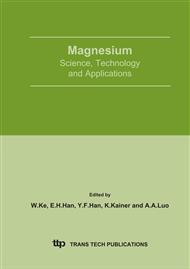p.763
p.767
p.771
p.775
p.779
p.783
p.787
p.793
p.797
Material Properties Test and Numerical Simulation of Impact for Die Cast Magnesium Alloy
Abstract:
The poison’s ratio of plane plate samples taken from AM60 magnesium alloy was tested in this paper. A number of strain controlled fatigue experiments were also carried out on MTS to investigate the stress-strain behavior under different temperature conditions. The finite element analysis software ANSYS was employed to simulate impact process of shot blasting. Results indicated that at the specific temperature condition the residual stress and plastic strain increased with impact velocity increasing. At the specific impact velocity, residual stress reduced and plastic strain increased with temperature increment.
Info:
Periodical:
Pages:
779-782
Citation:
Online since:
July 2005
Authors:
Keywords:
Price:
Сopyright:
© 2005 Trans Tech Publications Ltd. All Rights Reserved
Share:
Citation:


